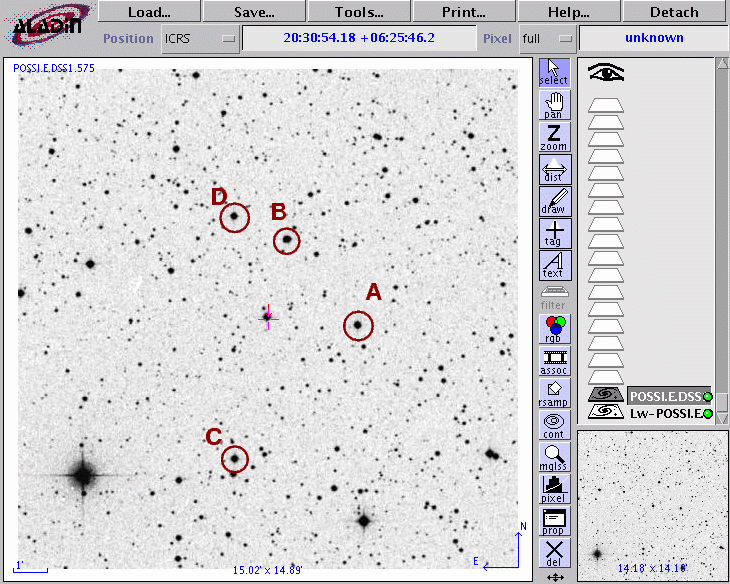
On the night of UT Sep 05, 2007, the SDSS Photometric Telescope ("PT" for short) took a series of exposures of the field around WASP-2 . This was intended as a test of the PT system for transit work.
Notes from the night
This is a chart of the field. WASP-2 is the bright star indicated by the crosshairs. I have marked four bright stars nearby which will appear later in graphs.

The star marked "A" has Tycho-2 magnitudes of Bt=13.1, Vt=12.0. The host star of WASP-2 itself has a magnitude V=11.98, according to WASP-1b and WASP-2b: Two new transiting exoplanets detected with SuperWASP and SOPHIE.
Following the procedures outlined by Kent Honeycutt's article on inhomogeneous ensemble photometry, I used all stars available in each image to define a reference frame, and measured each star against this frame. You can find the software package used to do the ensemble photometry online; it's free!
This night did NOT suffer from clouds the way that a night chosen earlier did. As proof, here is a graph showing the variation in the ensemble zeropoint during the WASP-2 measurements. A small number means "clear" and a large number means "cloudy". The variations are tiny: less than 0.020 mag peak to peak.
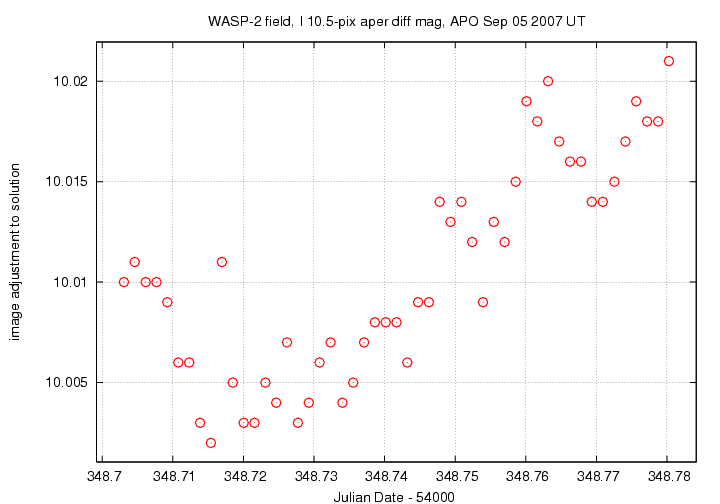
Below is a graph of the scatter in differential magnitude versus magnitude in the ensemble solution.
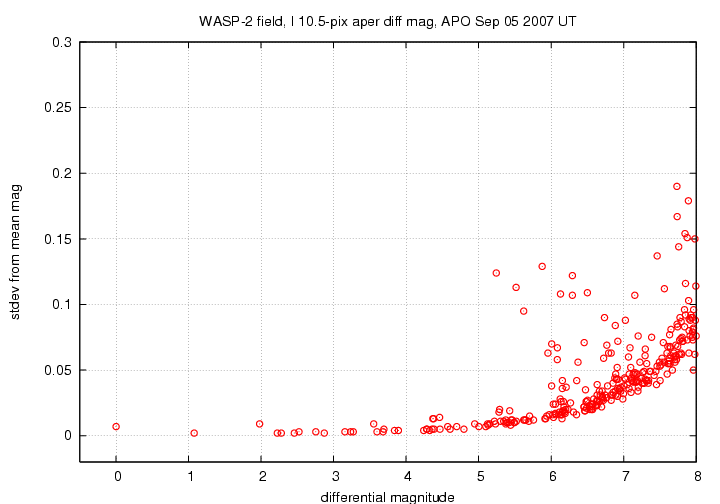
WASP-2 is the star at differential mag 2.0; note its slightly elevated scatter. The very brightest star on this graph was clearly saturated in the images; the second-brightest star may have been saturated. I marked both stars as "variable" so that their photometry would not influence the ensemble solution. The "noise floor" in these measurements is about 0.002 mag -- excellent!
The clump of stars with large scatter starting at differential magnitude 5 is due to bleed trails and diffraction spikes from a very bright star in the field.
Below are the light curves for the target and four comparison stars in the field.
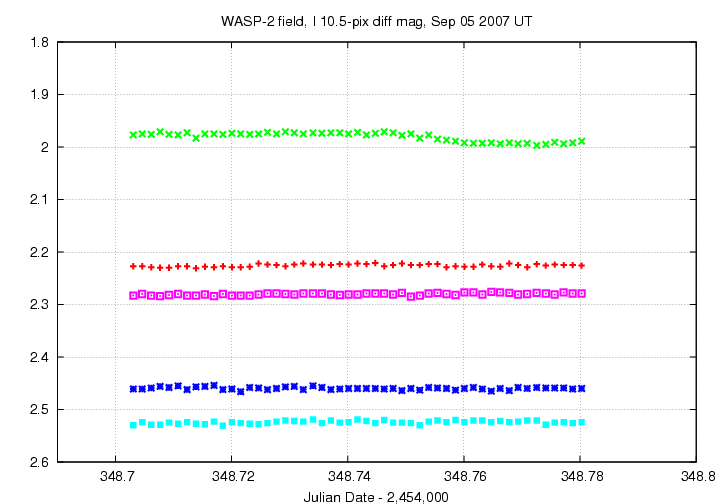
You can see that WASP-2 becomes dimmer in the latter stages of this run. The transit is obvious when we zoom in: in this closeup, I have shifted the data for star A to move them closer in magnitude to the target.
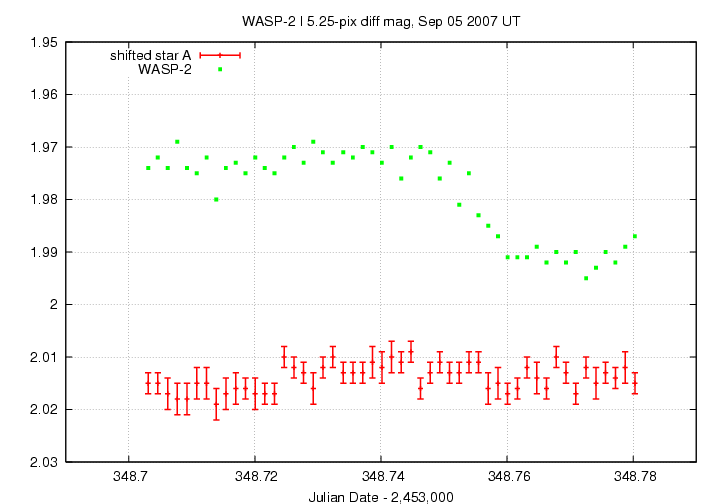
An ephemeris grabbed from transitsearch.org predicts for this night
----------------------------------------------------------------------------------------
Begin Transit Window PREDICTED CENTRAL TRANSIT End Transit Window
All Times UT
HJD Year M D H M
2454348.75 2007 9 5 5 53 2454348.78 2007 9 5 6 48 2454348.82 2007 9 5 7 43
----------------------------------------------------------------------------------------
The ingress start of UT 2007 Sep 5 05:53:00 corresponds to JD 2,454,348.7451. That agrees very well with the light curve shown above.
You can grab the measurements for your own analysis. Below is a table with three flavors of time, plus the differential magnitude of WASP-2 and an estimate of the uncertainty in each measurement. I show the first few lines of the file to give you an idea of its format.
# Measurements of WASP-2 made with APO PT, Sep 5, 2007 UT. # Each exposure 50 seconds long in SDSS i-band; # Tabulated times are midexposure and accurate only to +/- 1 second (??). # 'mag' is a differential magnitude based on ensemble photometry # using a circular aperture of radius 5.25 arcseconds. # # UT day JD-2,450,000 HJD-2,450,000 mag uncert Sep05.20307 4348.70307 4348.70765 1.974 0.003 Sep05.20460 4348.70460 4348.70918 1.972 0.003 Sep05.20616 4348.70616 4348.71074 1.974 0.003 Sep05.20769 4348.70769 4348.71227 1.969 0.003Warning: the times in this datafile have a small systematic error. I assumed the FITS header time was the shutter open time, so added half the exposure time to it. The FITS header time is instead roughly the shutter CLOSING time. My calculated times are therefore later than correct by about the duration of one exposure.
Last modified 9/17/2007 by MWR.